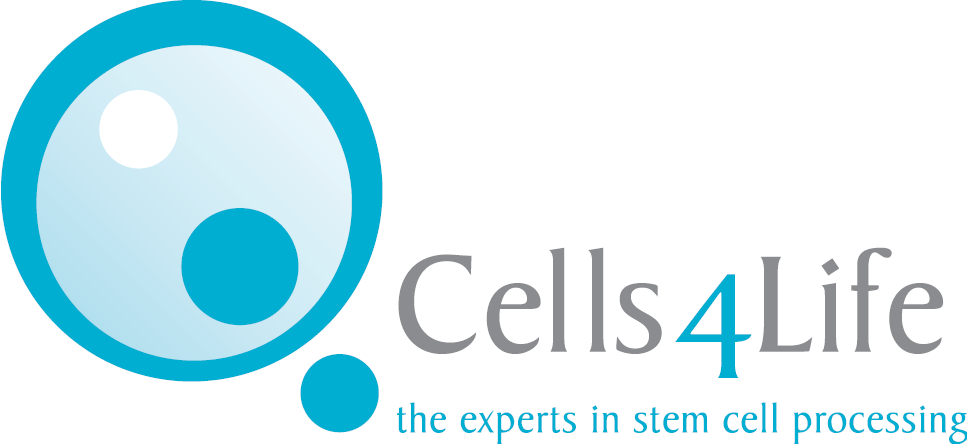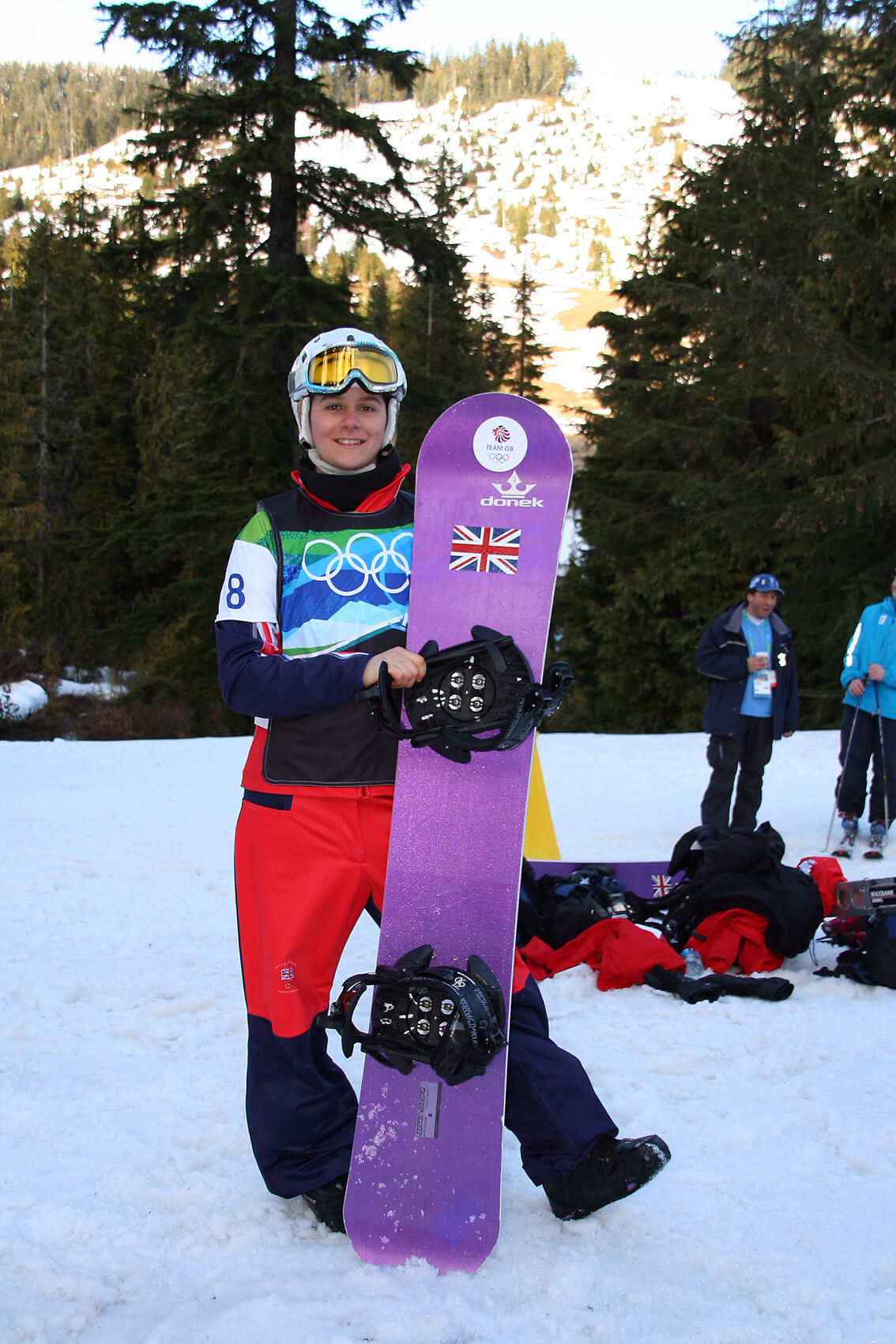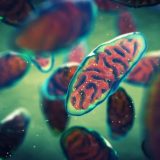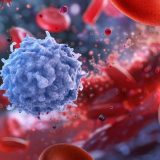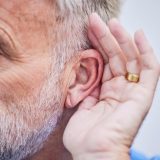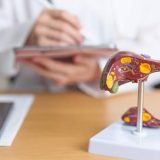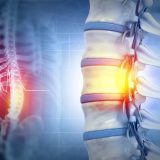Stem Cell Blog
Употребата на матичните клетки од папочна врвца рапидно се зголемува. Пред 10 години крвта од папочна врвца можеше да лекува околу 40 состојби, но денес таа бројка е над 80. Со нетрпение очекуваме нови терапии за болести и нарушувања како што се дијабет, аутизам и мозочен удар, можете да бидете во тек со најновите случувања во регенеративната медицина на нашиот блог за матични клетки.
“I knew that there could be a whole new world of medicine my baby could access in the future…”
You’ll spend nine months waiting and planning for baby’s arrival and when the big day arrives it will be one of the most important and special of your life. This is why we have designed our systems and processes to ensure that stem cell harvesting is quick, simple and safe, and does not get in the way of your birth plan or meeting your new baby when they arrive.
There is no step-by-step guide to how your labour will progress, so we offer a fully comprehensive 24 hours service to cover all eventualities:
-
Customer care – our advisors are always available out of hours to deal with emergencies or any urgent queries you may have
-
Phlebotomist – your dedicated technician is on call 24 hours a day to harvest your baby’s stem cells
-
Medical courier – our specialist courier service is available at any time, day or night, to pick up your baby’s cord blood and return it to Cells4Life for processing
-
Laboratory – our laboratory operates 24/7, 365 days per year to ensure that your baby’s stem cells will be processed as quickly as possible – this ensures a more viable cord blood sample

Who collects the cord blood?
Only a trained medical professional who is operating under Cells4Life’s Human Tissue Authority licence is able to undertake stem cell harvesting, which is why in most cases, we assign you with a one of our trained phlebotomists to carry out the collection.
Sometimes your doctor or midwife may also be licenced, in which case you will be able to choose whether the collection is performed by them, or one of our phlebotomy team.
What happens when I go in to labour?
At the first signs of labour, you should contact your phlebotomist to let them know that baby will be arriving soon and update them with any significant changes in the progression of your birth. They will use their extensive experience to decide when to leave for the hospital, ensuring that they are set-up and ready in time for the third stage of labour and subsequent cord blood collection. The collection process then takes place in a separate room, giving you and your family uninterrupted time to get to know your new baby.
How does it get back to the lab?
With stem cells – time is of the essence. We aim to process our UK cord blood samples within 24 hours of collection to ensure the greatest number of living cells. This is why our dedicated medical courier and laboratory are available 24 hours a day, every day of the year.
What if I need more help?
Our customer care team is available to deal with the unexpected or emergencies 24 hours a day. Whether labour has come on suddenly, you have left your cord blood collection kit at home, or anything else – our advisors are on hand to help in whatever they can. We can almost always make sure a cord blood collection takes place, no matter how little time we have to organise everything.
Stem cell harvesting is a simple, safe & painless process and our 24-hour support ensures we are here to help whenever baby decides to arrive.
As Cord Blood Awareness Month draws to a close we will be taking a look at the differences between banking cord blood in a family bank and donating cord blood to a public bank.
Because cord blood banking in the UK does not yet have the profile it deserves, there are still many misconceptions surrounding the different ways in which you can store your baby’s cord blood.
Cord Blood Facts:
•The UK banks less than 1% of the cord blood available from over 800,000 births each year, Singapore banks 25%.
•Up to 70% of people who need stem cell/bone marrow transplants will not find a match.
•Your baby’s cord blood is a perfect stem cell match for your baby.
•80% of transplant requests would be met if the UK saved just 50,000 cord blood units.
What is Cord Blood Donation?
When you donate your baby’s cord blood you are giving it away; it could be used for a variety of things. It could be used for research to advance or discover therapies for illness or disease. It could also be used to save the life of a stranger in need of a stem cell transplant. However, you would have no say in how the cord blood you donated is used; that would be the decision of the cord blood bank you donated it to.
Donating cord blood in the UK is not an option for most women. This is primarily because cord blood donation is only routinely available at 10 UK hospitals. During busy periods it may not be possible for your baby’s cord blood sample to be collected.
The criteria for donating cord blood is strict; it is not compatible with home births, delayed clamping or with any birth where the baby is born before 37 weeks exactly. If you meet the criteria and are able to donate cord blood, once it has been donated it is irretrievable. Cord blood is donated anonymously, which means should your baby need it in the future you will not have access to it. However, in the event your baby needs a stem cell transplant in the future, the best possible match would be found via the public registry.
It is also worth considering that cord blood which is donated is not used for the wide variety of treatments that privately stored cord blood is. Donated cord blood is generally limited to the treatment of blood disorders, metabolic conditions, and cancers. Regenerative therapies are not currently available with donated cord blood units.
However, while cord blood donation has restrictions to how it can be used, it is free of change and could still be used to save the life of someone in need.
What is Family Cord Blood Banking?
Family banking is a completely different service to cord blood donation. When choosing to bank your baby’s cord blood in a family bank it will be stored for the exclusive use of your baby and your baby’s family. You will have complete control over your baby’s cord blood sample. When choosing to store cord blood in a family bank, you can choose a variety of settings to give birth. As family cord blood banks act as third parties and have a third party arrangement with many hospitals, you can choose to give birth in over 200 NHS and private hospitals. Family banking is also compatible with caesarean sections, home births, multiple births and even with births where the mother wishes to delay cord blood clamping.
In addition to flexibility when giving birth, family cord blood banking also offers a wider variety of uses. Cord blood stored in a family bank can be used in regenerative therapies. It is worth noting that 82% of autologous cord blood therapies currently performed are for the treatment of brain injuries including traumatic brain injuries, acquired brain injuries and cerebral palsy [1].
Family banking remains the only way to ensure access to the full range of approved therapies and clinical trials.
While there is a charge for family banking this is negligible for the peace of mind and medicinal access that it offers. Currently Cells4Life’s Cells+ package equates to less than £65 per year for 25 years storage, you can find out more here.
October is Breast Cancer Awareness Month. Here we look at breast cancer, the causes, the symptoms and how stem cells are being used in the fight against the illness.
Each year in the UK approximately 55,000 people are diagnosed with breast cancer. Breast cancer is often associated with women as it is predominantly women who are diagnosed with the illness but breast cancer also occurs in men too with around 350 men being diagnosed each year [1].
Breast cancer is the most common cancer in the UK and while more people are being diagnosed but in contrast survival rates are increasing; this could be because of improved treatment and earlier detection[1].
Surprisingly, breast pain isn’t usually a symptom of breast cancer. Symptoms of breast cancer include:
-
a lump or area of thickened tissue in either breast
-
a change in the size or shape of one or both breasts
-
discharge from either of your nipples (which may be streaked with blood)
-
a lump or swelling in either of your armpits
-
dimpling on the skin of your breasts
-
a rash on or around your nipple
-
a change in the appearance of your nipple, such as becoming sunken into your breast[2]
Treatment of breast cancer can vary, breast cancer is treated on a case by case basis. In cases where intensive chemotherapy is used, a stem cell transplant may be required to replace damaged bone marrow.
[1] https://www.breastcancercare.org.uk/news/media-centre/facts-statistics
[2] http://www.nhs.uk/Conditions/Cancer-of-the-breast-female/Pages/Symptoms.aspx
To celebrate International Women’s Day, we’re taking a brief look at the career of one of the most pioneering women in modern medicine; Dr. Joanne Kurtzberg.
Joanne Kurtzberg & the first cord blood transplants.
 Dr. Joanne Kurtzberg is a researcher at Duke University, she is a pioneer who is advancing the development of stem cell therapies, particularly those using umbilical cord blood.
Dr. Joanne Kurtzberg is a researcher at Duke University, she is a pioneer who is advancing the development of stem cell therapies, particularly those using umbilical cord blood.
In 1988 Joanne Kurtzberg was involved in the world’s very first umbilical cord blood stem cell transplant [1] which treated a boy for Fanconi Anaemia using his sister’s cord blood. Then in 1993, Kurtzberg went on to perform the first successful unrelated cord blood transplant [2]. Since that first cord blood transplant in 1988, over 35,000 cord blood transplants have been performed [3].
Joanne Kurtzberg, advancing the use of cord blood.
Today Kurtzberg is advancing the application of umbilical cord blood treatments for a variety of illnesses including blood disorders, genetic diseases and brain injuries. Speaking to Duke University, Kurtzberg said “I’ve learned that after a cord blood transplant, donor cells help heal the brain. My current research is focused on finding ways to use cord blood cells to help children with Krabbe disease, MLD, ALD, Hurler syndrome and other leukodystrophies. I am also developing new treatments for children with birth asphyxia, cerebral palsy and autism as well as for adults with stroke [1] .”
Currently there is no cure for cerebral palsy, however, in 2012 Kurtzberg began to enrol patients with cerebral palsy who had banked their cord blood at birth in a clinical trial. The pioneering trial aimed to investigate the application of cord blood in treating the illness. Preliminary results of the trial have showed improved brain development and motor skill in 70% of participants.
In 2014 a $15 million grant was given to Kurtzberg and her team to help fund a $41 million 5-year project. The money is to fund research to investigate the application into stroke, autism, and other brain disorders. The results of this research are eagerly anticipated.
Kurtzberg’s research has only been possible because families choose to store their baby’s cord blood in family banks. Kurtzberg has made, and continues to make, a valuable contribution to medicine and the advancement of stem cell research. Thank you, Dr. Kurtzberg.
[1] https://www.dukemedicine.org/find-doctors-physicians/joanne-kurtzberg-md
[2] http://ccbb.duke.edu/about-cord-blood/history-cord-blood
[3] http://www.nationalcordbloodprogram.org/
April 10th is National Sibling Day and it’s also the perfect time to discuss siblings and cord blood.
There are many benefits to storing cord blood for your baby but what if you already have children and you didn’t know about cord blood banking when they were born? Should you still bank the cord blood of your future children? Let’s find out more…
Sibling cord blood has played an important role since the inception of cord blood transplantation for treatment. In fact, the world’s first cord blood transplant in 1988 used sibling cord blood. Matthew Farrow (pictured with his wife and son), a boy with Fanconi Anaemia, was treated with his new-born sister’s cord blood. The transplant was a success, he is still alive and well today. Something that would have been unthinkable without his sister’s cord blood. Since that first cord blood transplant over 30,000 stem cell transplants using cord blood have taken place.
Another child who received sibling cord blood is Carole Mulumba. Unfortunately, Carole suffered from Sickle Cell Anaemia, a painful and potentially fatal condition. When her mother became pregnant, her physician advised that the cord blood should be collected. Carole is African American and there is a shortage of suitable stem cell donors from black, ethnic minority and mixed heritage backgrounds. Thankfully, siblings have a 25% chance of being a perfect HLA match and Carole found her perfect stem cell match in her brother.
For the Mulumba family, choosing to store the cord blood of their second child was an easy decision. While they hadn’t stored Carole’s cord blood, there was an obvious need to store their son’s as Carole needed treatment for a serious illness. But what if you don’t have an immediate need for cord blood and you have older children who you didn’t store cord blood for? This scenario faced Tonya Morris.
When Tonya Morris was pregnant with her fifth child she discovered the benefits of saving cord blood. Unfortunately, Tonya hadn’t known about cord blood banking with her first four children but once she discovered the possibilities, she decided it was something she would do. In her mind it was an insurance policy, one she hoped the family would never need. Tonya gave birth to a beautiful baby girl, Sparrow, and her cord blood was collected and stored. Life continued as normal, but then the unthinkable happened.
Sparrow was just 20 months old when she fell into a pool of water and almost drowned. She was without a pulse for over 45 minutes and doctors prepared her parents for the worst. Thankfully she survived and because her parents decided to bank her umbilical cord blood she was able to enrol on a clinical trial a Duke University. Improvements in Sparrow’s health began to appear almost immediately after the trial procedure. Today she is a healthy child.
Thankfully, Sparrow’s cord blood was there when she needed it and there was a clinical trial available for her to enrol into. The clinical trials headed by Joanne Kurtzberg at Duke University have generally focussed on using a child’s own cord blood to treat brain injuries and cerebral palsy. However, a pioneering clinical trial taking place in Australia will investigate the application of sibling cord blood in cerebral palsy. The trial will use sibling cord blood of the participants who have had their cord blood stored in private banks. The publicity around the trials at Duke may have had a direct impact on the amount of parent’s banking sibling cord blood for their children with cerebral palsy. It can take years before research becomes treatment but for parent’s taking part in the Australian trial, they now have access to an experimental therapy.
The Bromwich family have banked cord blood as an insurance policy for their children. Despite being a paediatric nurse, Kim Bromwich was unaware of cord blood banking with her first three children. However, during her pregnancy with Leo, her fourth child, she discovered the benefits. They decided to bank Leo’s cord blood with Cells4Life in the hope that medical advances could offer treatments for the rare degenerative condition ankylosing spondylitis (AS), a condition which runs in the family. Kim who has children Grace, 10, and twins Tamsin and Rachel, eight who celebrate their birthday on National Sibling Day, said “Leo’s stem cells are now stored and ready should he ever need them. It was reassuring to know that they may even be a match for his big sisters if ever they were ill.”
Amanda Turner also banked her baby son’s cord blood and cord tissue for her daughter Casey as an insurance policy. Casey was diagnosed with leukaemia when she was just 12 years old. Amanda was pregnant at the time and wanted to store her baby’s cord blood in case Casey needed a stem cell transplant in the future. While Casey did not need a stem cell transplant at this point, Amanda did not want these precious stem cells to go to waste. Amanda stored her son’s cord blood with Cells4Life, who provided a complimentary service because of the family’s exceptional circumstances.
Public banks encourage families to donate cord blood often stating that a child’s cord blood would not be used to treat their own blood cancer. Unfortunately, this can lead to some confusion when parents are making the decision to bank cord blood in a family bank. While a child’s own cord blood may not be used to treat their own blood cancer, it can be used in the treatment of other cancers such as neuroblastoma. Additionally, sibling cord blood can be used in the treatment of a sibling’s blood cancer, like in the case of Keegan Doheney whose brother’s cord blood was used to treat his leukaemia.
Privately stored cord blood can be an important therapeutic resource for many families. The cord blood of a baby sibling could be used to treat an older sibling who is in need of a transplant. It could also be of great benefit to families with Asian or African heritage who are at increased risk of blood disorders [1].
Cells4Life have released cord blood and cord tissue samples to treat siblings. In fact, 50% of the cord blood samples we have released and 100% of cord tissue samples we have released have been to treat a sibling [2].
Making the decision to bank a younger child’s cord blood when older children haven’t had their cord blood stored can be difficult, but it doesn’t need to be. One banked cord blood unit is better than none. Every single cord blood unit your family has stored not only increases the treatment options available to the donor children but also gives donor children the opportunity to give their siblings a helping hand when they need it most.
[1] Bone Marrow Transplantation advance online publication, 1 June 2015; doi:10.1038/bmt.2015.124
[2] https://cells4life.com/cells4life-difference/cells4lifes-cord-blood-releases/
Professor Joanne Kurtzberg is a world-renowned researcher based at Duke University. Her career has spanned decades and contains many pioneering medical landmarks: from the first cord blood transplant in the late 1980s, to her current research into the application of cord blood stem cells to treat cerebral palsy, autism, stroke, and more.
Joanne Kurtzberg is a leading figure in the industry, and arguably one of the most important women in medicine today. However, for someone who has made such an impact, it is surprising to discover that in her youth she never envisaged life as a doctor.
Prof. Kurtzberg grew up in New York. She had no plans for a career medicine and registered in a private college to study music. In order to fund her studies she began working with autistic children, and it was this time that would change the course of her life.
Prof. Kurtzberg was fascinated by the way that music helped autistic children to connect with their environment and the people around them and she decided to find out more about the condition. This led her to enroll at medical school where she began to learn about a relatively new area of research; stem cells from cord blood.
Over 35,000 cord blood transplants have taken place worldwide
From there, Professor Kurtzberg went on to take part in some of the most significant events in modern medicine, and since her involvement in the very first cord blood transplant in 1988 there have been over 35,000 cord blood transplants around the world.
Prof. Kurtzberg firmly believes that cord blood is providing miracles. It has enabled her to see wheelchair bound children walk for the first time and non-verbal children begin to speak and in her words “there is no other way to describe the things that are happening.”
Unfortunately, not every doctor realises the potential of cord blood and this is the cause of much frustration for the Professor. 32 years ago, when she was pregnant with her son, Prof. Kurtzberg’s gynaecologist dismissed cord blood banking as science fiction, and even today some gynaecologists remain ignorant of its benefits. As a result, these gynaecologists are reluctant to promote cord blood banking to women experiencing a normal pregnancy. This then has the knock on effect of parents missing out on the opportunity to store their baby’s cord blood because they perceive the procedure as a luxury. Addressing this the professor says “I am glad to see science is able to provide solutions for cases which used to be regarded as hopeless. I only hope that those who continue throwing umbilical cord blood into the garbage will realize that it’s a treasure.”
Professor Kurtzberg continues to advance the application of umbilical cord blood in medicine. Today her research utilises a cord blood transplant to treat children with cancer using a sibling’s stem cells as well treating grandparents who have suffered strokes with the umbilical cord blood of their grandchildren.
In addition, Prof. Kurtzberg is researching the application of a child’s own cord blood as a treatment for autism, bringing her working life full circle as she has the chance to help autistic children once again.
The research being conducted by Prof. Kurtzberg and her team is only possible because parents have had the foresight to choose cord blood banking for their children. These parents are, not only protecting their own children’s future, but they are also helping to advance the stem cell treatments available to all of us today and in the future.
Throughout her impressive career Prof. Kurtzberg has given so much to the field of medicine and her work has changed the lives of countless people. However, it is clear from the research she is conducting today that she still has much more to give.
You can read the original, fully translated interview with Prof. Kurtzberg at parentsguidecordblood.org. The interview was conducted by Smadar Shir for the Israeli newspaper Yediot Aharonot Saturday Supplement. The article, written in Hebrew, was translated by Tali Pelz.

Football is sport loved across the country with young boys and girls taking part in the sport from a young age; developing a passion for a sport, which they will most likely take with them into adulthood. As the nation’s favourite sport, football is played and enjoyed by the young and the old alike. Unfortunately, the beautiful game has an ugly side; injury. Many football players, both amateur and professional, suffer damage during play and this often results in the stifling of a football career before it’s begun, or premature retirement when a player is at the peak of their game. Sports injuries continue represent a big problem.
However, stem cell therapy could be the key to providing footballers with longevity, and as research into regenerative medicine has progressed and diversified, there are growing numbers of high-profile athletes opting for stem cell treatment to remedy their sports injuries.
Could Stem Cells Help Heal Sports Injuries to the Hamstring?
Recently it has been reported that Real Madrid star Christiano Ronaldo has undergone stem cell therapy for a torn hamstring. Hamstring injuries are common in football as the hamstring muscles and tendons can be over stretched, resulting in a tear.
A study that looked at the potential of regenerative therapies, including stem cells, to treat tendon injuries states that they are an “attractive option” as utilising the “body’s intrinsic potential to repair and heal damaged tissues” often results in a whole and long-lasting repair. [1]

Stem Cells A Future Therapy For Broken Foot Bones?
The metatarsal is a group of bones found in the foot. They can be broken or fractured through repeated stress or sudden injury.
In recent years there have been several high-profile footballers who have sustained metatarsal sports injuries – who could forget David Beckham’s broken metatarsal, which put his 2002 world cup in doubt?
The fifth metatarsal bone is the bone on the outside of the foot which connects to the little toe. If this bone becomes broken close to the ankle then healing can be problematic as the area has low blood flow. [2]
Stem cells may hold the answer to healing such bone fractures. As demonstrated by several clinical studies.[3]

Meniscal Tears Mended With Stem Cells?
Knee injuries are common amongst football players, due to strain placed upon the joint during exercise.
Footballers who have suffered sports injuries to the knee include Alan Shearer, Christiano Ronaldo, and Paul Gascoigne. Recently, even controversial footballer Louis Suarez has undergone surgery to remove a damaged meniscus within the joint.
Treatment of cartilage injuries in the knee often involves surgery called microfacture. This is where multiple tiny fractures are created near to the damaged cartilage after any calcified fragments have been removed.
These fractures allow the release of blood and bone marrow, which helps create a repair. [4]
Microfracture surgery is often the first choice for treat cartilage damage in the knee. However, a study found that whilst there is improved knee function for the first 2 years, there was insufficient information to determine the long term efficacy of the procedure.[5]
Fortunately a surgical technique being developed at University Hospital Southampton may improve the outcome for these patients. A technique known as “Abicus” uses microfracture surgery followed by the use of a special glue like substance made from the patient’s stem cells and hyaluronic acid. This is placed over the affected area and allowed to set. The whole procedure lasts just 30 minutes and could offer the solution for an often terminal footballing injury.[6]
Common Sports Injuries Don’t Need To End Careers
The days where a sports career comes to an end because of an injury are drawing to a close as advancements in medicine and stem cell research provide treatments for a huge range problems. Of course, it’s not just professional athletes who will benefit – these miraculous stem cell therapies will soon be available to everyone who needs them.
- http://www.ncbi.nlm.nih.gov/pmc/articles/PMC4519231/
- https://www.nlm.nih.gov/medlineplus/ency/patientinstructions/000571.htm
- https://cells4life.com/clinical-update/
- https://en.wikipedia.org/wiki/Microfracture_surgery
- http://www.ncbi.nlm.nih.gov/pubmed/19251676
- http://www.dailymail.co.uk/health/article-2702703/New-knee-op-using-stem-cells-stop-arthritis-extend-sporting-careers.html
It’s Scleroderma Awareness Week. We’re taking part by raising awareness across our social media channels.
Scleroderma is an autoimmune condition which causes hardening of the skin and/or internal organs. This hardening is caused by the excess production of collagen.
There are two main types of scleroderma these; localised scleroderma and systemic sclerosis. Localised scleroderma affects only the skin while systemic sclerosis can affect the skin, blood circulation and internal organs [1].
The symptoms of scleroderma are similar to that of many other autoimmune conditions and as such it can take a long time to get a diagnosis, it is estimated that it could take up to 5 years for a person with scleroderma to receive the correct diagnosis [2].
While scleroderma can affect both sexes and across age groups it is most prevalent in women aged 30-50. Thankfully, scleroderma is particularly rare with just 6,000 people receiving a diagnosis of systemic sclerosis in the UK [3] and 3 in a million children receiving a diagnosis of localised scleroderma [4].
Current treatments for scleroderma are symptomatic, meaning that there are no treatments currently available to treat the causes of scleroderma. What causes the onset of scleroderma is not yet fully understood which may be why therapies to treat the causes of scleroderma have been difficult to find. However, there has been some success in treating scleroderma with stem cells, particularly autologous stem cells. Autologous stem cells are stem cells which come from the patient’s own body.
Over the course of the week we will look at the causes, symptoms and risk factors of scleroderma in more detail. Later in the week we will also look at the role stem cells are playing in the search for a treatment of scleroderma and look at the work of Dr. Richard Burt of Northwestern University who is a leading figure in the development of stem cell therapies for autoimmune diseases.
[1] http://www.nhs.uk/conditions/scleroderma/Pages/Introduction.aspx
[2] https://www.youtube.com/watch?v=Gl66qO8uxSM
[3] http://www.patient.co.uk/health/scleroderma-systemic-sclerosis
[4] http://www.patient.co.uk/health/localised-scleroderma-morphoea
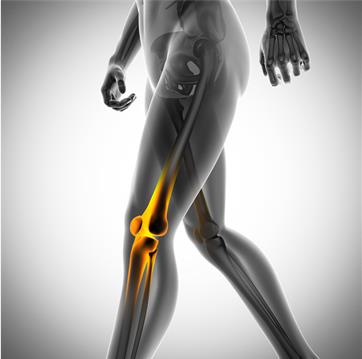 Rheumatoid arthritis, also known as RA, is an autoimmune disease. Normally your body’s immune system makes antibodies which attack bacteria and viruses to help fight infection. In the case of rheumatoid arthritis, these antibodies are sent to the lining of the joints where they mistakenly attack the surrounding tissue and the joint [1].
Rheumatoid arthritis, also known as RA, is an autoimmune disease. Normally your body’s immune system makes antibodies which attack bacteria and viruses to help fight infection. In the case of rheumatoid arthritis, these antibodies are sent to the lining of the joints where they mistakenly attack the surrounding tissue and the joint [1].
The main symptoms of rheumatoid arthritis are:
Joint pain – usually first thing in the morning or after a period of inactivity
Stiffness – joints may feel stiff first thing in the morning or after a period of inactivity
Swelling, warmth and redness – the lining of affected joints may become inflamed, causing swelling and making them hot and tender to touch [2].
These symptoms may be accompanied by more generic symptoms:
Tiredness and a lack of energy
High temperature (fever)
Sweating
Poor appetite
Weight loss [2]
There is currently no cure for rheumatoid arthritis and current treatments are symptomatic. Current treatments can help prevent and slow joint damage and reduce inflammation and relieve pain giving sufferers a more active life [3].
While there is no cure for rheumatoid arthritis, scientists are currently conducting 26 clinical trials which are investigating the application of stem cells in RA [4], giving sufferers hope of a more effective therapy being found in the future.
If you think you or someone you know may be suffering with RA please visit your GP or medical practitioner for further advice.
[1] http://www.nhs.uk/Conditions/Rheumatoid-arthritis/Pages/Causes.aspx
[2] http://www.nhs.uk/Conditions/Rheumatoid-arthritis/Pages/Symptoms.aspx
[3] http://www.nhs.uk/Conditions/Rheumatoid-arthritis/Pages/Treatment.aspx
[4] https://clinicaltrials.gov/ct2/results?term=stem+cells+rheumatoid+arthritis&Search=Search
